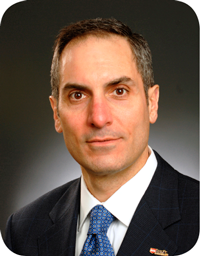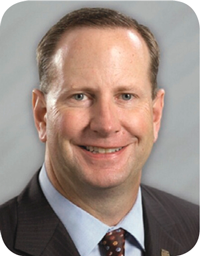
Impact of Carlson
Friday, April 1, 2011
By Chris Mikko
How can you assess the Carlson School’s overall impact? While that’s a challenging question, there is plenty of evidence in sight.
Many of the articles in this issue have attempted to showcase the various ways that the Carlson School makes an impact both on the Twin Cities-area community and beyond. Doing so is a relatively straightforward process. The school is a recognized leader in business education and research. It has deep and long-standing connections to the area business sector. Its faculty, students, and alumni have long engaged in outreach activities that have contributed to profound and lasting positive change.
But how do you actually measure the school’s overall impact? That’s a more challenging question.
Historical perspective
One way to evaluate the impact is by taking a look at the Carlson School’s history. Since its founding in 1919 as the University of Minnesota School of Business, the Carlson School has provided groundbreaking research in such realms as marketing, industrial relations, and management information systems. It’s also pioneered innovative programs such as the Carlson Executive MBA, the Enterprises, the Medical Industry Leadership Institute, and a wide (and growing) cadre of international programs.
At the same time, the Carlson School has turned out thousands of graduates since 1919. Over the years, those alumni established new businesses, worked at mid-sized firms, and populated the ranks of Fortune 500 powerhouses such as 3M, Cargill, Target, and General Mills. Some, such as school namesake and Carlson founder Curt Carlson, ’37 BA, built global businesses. Others, such as former Minnesota Governor C. Elmer Anderson, ’31 BBA, found success in the political realm. Still others, such as former NFL coach Tony Dungy, ’78 BSB, used their education for careers outside the traditional business sector.
"A win-win relationship"
Throughout the years, Carlson School graduates have provided the local business community with a steady supply of highly educated employees. “From my perspective, the most significant contribution the Carlson School provides is its high-caliber graduates,” says Andrew Cecere, ’91 MBA (right), vice chairman and CFO of U.S. Bancorp. “It’s a win-win relationship.”
Jim White, ’89 MBA (left), president of Ecolab’s International Sector, echoes Cecere’s sentiments. “The Carlson School is a tremendous source for talent,” he says. “Before coming to Ecolab, I worked for General Mills, Pillsbury, and International Multifoods. At each of those companies, we recruited high-quality people from the Carlson School who could work across a range of functions.”
The real world
Another crucial area of impact is the Carlson School’s work on real-world business issues. White notes that Ecolab’s work with the Brand Enterprise has paid dividends to his company. “We’ve worked with David Hopkins and the Brand Enterprise on three or four projects,” he says. “Each one has produced a tangible analysis and real results.”
Matt Kramer (left), president and CEO of the Saint Paul Area Chamber of Commerce, points to several other recent Carlson School initiatives. “Professor Stephen Parente’s work at the Medical Industry Leadership Institute is building generations of leaders in our critically important medical device industry,” he says. “Another great example is with the Center for Integrative Leadership, which builds on the world recognition that the Twin Cities has in the nonprofit world (i.e., groups such as the McKnight Foundation) and creates the context for learning and improvement in an industry sector that has significant visibility across the state. It’s a great example of how the Carlson School builds on and improves Minnesota’s economic positioning. Without the Carlson School, the Twin Cities would be a poorer community, both in financial and intellectual terms.”
The Minnesota Chamber of Commerce, the state’s largest business advocacy organization, has produced many key public policy measures to help Minnesota companies stay competitive in the global economy. “We consider the Carlson School as a partner in that effort, producing leaders who are committed to protecting Minnesota’s competitive edge in business excellence,” says Chamber President David Olson (right). “The school’s first-class events play an integral role in engaging individuals and organizations in this common mission.”
Deep examination
It’s difficult to argue with these assessments. But the question still remains: How can you quantify that impact? Last October, University President Robert Bruininks commissioned an economic impact study designed to provide a comprehensive analysis of the University’s impact on the state as a whole. Preliminary results of
the study have been eye-opening. Among other findings, they indicate that:
• The University makes an $8.6 billion impact on the state each year.
• Every dollar invested in the U of M by the state generates $13.20 in the statewide economy.
• More than $512.3 million in state and local tax revenue is generated by the U of M every year.
• A total of 79,497 jobs are supported by the University—42,319 jobs on its campuses and another 37,178 in communities across the state.
• U of M alumni have formed a total of 10,000 companies in Minnesota.
• Nearly 25% of these company founders moved to Minnesota to attend the University.
• These businesses employ 500,000 people and generate $100 billion in annual revenues within the state.
While impacts at the individual college level have not yet been separated out in this study, there is little question that the fruits of the Carlson School play a large part in the economic success of the University and the region.



